Introduction
This page simply illustrates a number of joints used in the timbering, carpentry, joinery and cabinetmaking. The most popular joint in construction is the
butt joint using nails , screws or bolts. The joints below are mainly used in making furniture, decorations, and architectrual
features. The joints are often expensive to produce and result in localised weak points when used for
structural construction. Therefore considerable care should be used when using the joints below for
load bearing application and the rules contained in the relevants standards e.g BS 5268-2 should be applied when relevant.
Butt Joints.
The butt joint is so called because one piece of stock is butted up against another.
The timber is fixed in place then fixed in place using nails or screws.
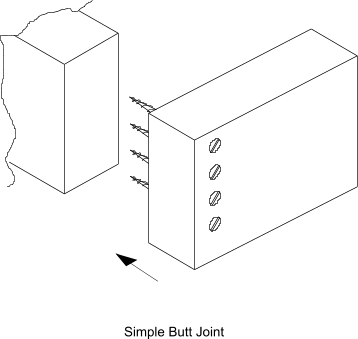
Finger Joint
This joint is a positive permanent strong joint when fixed using adhesive. The long length of
glued area is very beneficial to the resulting strength The in-line
version is often used to produce a long length of timber / glued laminate from shorter lengths. The corner
version is used for producing strong drawers boxes etc. The joint if made even stronger if the fingers
are made using dovetail form..see below.
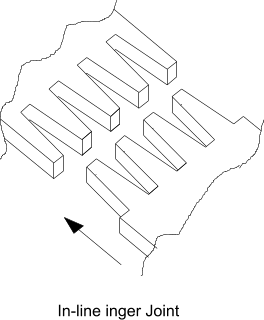
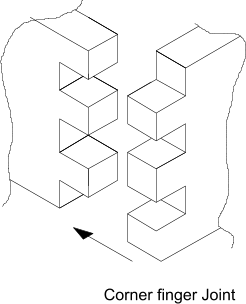
Mitre Joint
This joint is in effect this is an angled butt joint, sometimes relying on adhesive alone to construct it.
It requires accurate 45� cutting, however, if the perfect 90� corner is to result. Additional fastening methods such as biscuits, splines
etc are used to reinforce the strength of the joint
Used for picutre frames and furnature items.
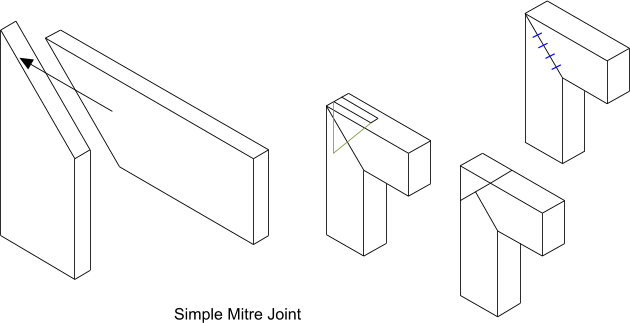
Tongue & Goove Joint
This is a very popular joint in the building industry providing a very convenient method of accurately
fixing flooring boards to produce flat surfaces which are aesthetically pleasing - in this application the joints
are generally not bonded using adhesive. When the joint is used for structural purposes with adhesive
, the joint provides accurate positioning with good strength.
A variation of this joint is to have grooves in both boards and a separate spline as a fastening/fixing method.
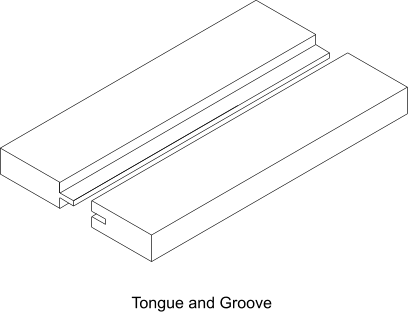
Dowel Joint
This is a relatively strong version of the corner butt joint. The joint is made permanent
using adhesive. The joint is clearly a fastening method which is not suitable for heavy loads.
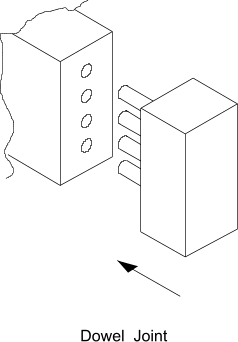
Mortice & Tenon Joint
This joint is a strong and frequently-used joint for assembling a variety of products where
strength and reliability are required. The mortice can either
be a through mortice, as shown, or a blind mortice that only partly penetrates the
stock. The joint is made permanent using adhesive. Dowels are also used to prevent
separation.
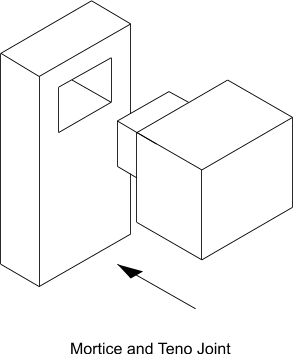
Lap Joint
Another simple joint is the half-lap joint.
This requires the removal of stock to exactly half of the overall thickness of the piece, in order that a
similar piece can mate with it. This technique is also used in the cross-halving joint
(see later).
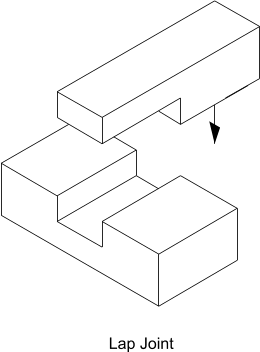
Cross halving - Lap Joint
The main uses for this joint are to allow two pieces of stock to cross such that the joint is contained
within the overall thickness of the material. Used for structural frames. Glue alone
can be used as a fixing method, or combined with screws or nails.
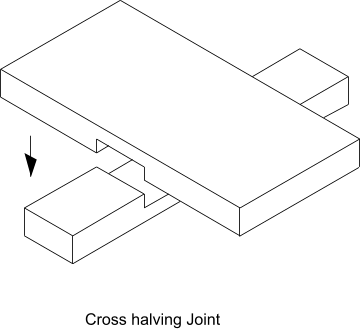
Dovetail Joint
The dovetail joint is a variation of the finger joint which provide positive resistance to lateral separation. It is
often used for drawer fronts The joint is difficult to produce but when correctly made is a strong positive joint.
The joint is generally bonded using adhesive.

| 








